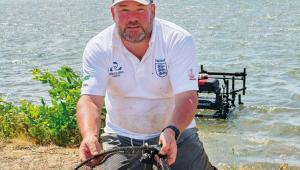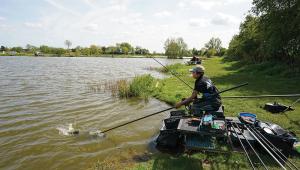Practice makes perfect

With the standard of match anglers at an all-time high, talent alone just isn’t enough and if you want to be consistently performing at the very top, practice is a huge part of any successes either at home or abroad. Having recently fished in the World Feeder Championships in Serbia, the Feeder Masters Final at Tamar and festivals over in Ireland, Michael Buchwalder is no stranger to a big match and he’s enjoyed some amazing results along the way too.
As with all top anglers, it’s quickly on to the next big event and with the new European Feeder Cup being recently announced to take place at Barston Lakes, Michael was keen to get some practice in for Team Ireland ahead of the inaugural event. With teams from England, Ireland, Germany, Austria, Belgium, Czech Republic, Hungary and Lithuania all confirmed to be competing, this is another huge event with fierce competition where practising will have a big say in the final result.
How top anglers practise, and what they experiment with on practice days is what sets the very best apart from the chasing pack, so we caught up with Michael on the bank at Barston to see exactly how to practise like a pro! Michael takes up the story…
Where Do You Start?
The European Feeder Cup at Barston is probably one of the easier events to get ready for in reality as it isn’t far from home and is a venue I fish throughout the year on and off. I know the venue is packed with skimmers and these are going to be a main target for the match itself, so the initial basis of any practice at home or abroad is to work out what fish you’re fishing for, what the dominant species is as your bread-and-butter fish and whether there are any bonus fish that can get you out of jail.
Of course, as we all know Barston is rammed with big carp and F1s too; in some areas around the lake these are the only way to win your section or finish higher up. The problem you face with international rules is we cannot chuck a Method feeder with a 4in hooklength and a wafter on the hair. With a natural baits rule plus a minimum 50cm hooklength to be used, alternative methods must be found to make the most of these big bonus fish should you draw on them.  Practice abroad or on venues you’re not familiar with at home can start long in advance of the practice week or two prior to the match, simply by speaking to other anglers who have fished the venue. Love it or hate it, social media can be your best friend in these scenarios as there are thousands of anglers who are connected and willing to share information. This info should always be taken with a pinch of salt however, as it isn’t always completely up to date, but by getting a bit of an idea you can work out what fish get caught in each section and a rough idea of the distances, depths and baits that work best to give yourself a bit of a head start.
Practice abroad or on venues you’re not familiar with at home can start long in advance of the practice week or two prior to the match, simply by speaking to other anglers who have fished the venue. Love it or hate it, social media can be your best friend in these scenarios as there are thousands of anglers who are connected and willing to share information. This info should always be taken with a pinch of salt however, as it isn’t always completely up to date, but by getting a bit of an idea you can work out what fish get caught in each section and a rough idea of the distances, depths and baits that work best to give yourself a bit of a head start.
Distance And Depth Matter
One of the most important things for me to work out is the depth and distances where certain species and methods are at their most effective. While Barston isn’t really a venue where depth matters due to it being four feet deep everywhere pretty much, on venues like Tamar finding the correct depth the skimmers want to be in is absolutely key. On a venue like that, my first port of call is to practise and find a depth that works, then take that to another area on the venue to see if that information correlates and you can begin to get a good idea about the best places and/or distances to target from the off.
At Barston though, it’s about finding out what distance the bigger fish are going to be most comfortable at as venue knowledge suggests that a short feeder chuck of 13 to 18 metres is going to be a banker for catching numbers of skimmers.
Tackle Requirements
In the very early stages of getting ready for a big event, one of the first things I want to find out is what rods and reels I will need to be using on the venue. The key question when speaking to other anglers about a venue you’re preparing for is, what is the longest chuck? From there, you’ll understand the most demanding scenario you’re likely to face, but you’ll also know as an angler what feeder rods and reels suit your fishing style best for reaching the required distance.
Here at Barston, I know that I’m going to be using MAP Dual 10ft or 11ft feeder rods on the shorter line; these are lovely soft actioned rods with a little power in the middle to enable me to swing some smaller skimmers to hand. On the longer line, which can be anywhere from 30 to 65 metres, I’m going to keep my choice simple and go with my all-time favourite rod, the MAP 12ft SUV Parabolix Ultra II, an incredible all-rounder and perfect for bigger skimmers, carp and F1s at longer distances. 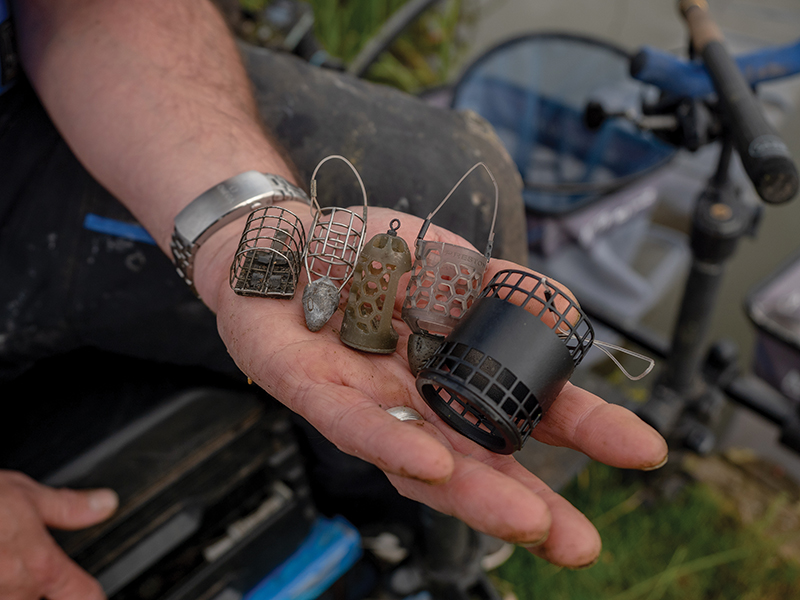
 Another important consideration from a feeder fishing point of view is whether to use braid or mono; this is something that can take a bit of experimentation but generally if roach are involved I’ll nearly always use braid where allowed, but with bigger fish like carp this isn’t necessary and mono will suffice.
Another important consideration from a feeder fishing point of view is whether to use braid or mono; this is something that can take a bit of experimentation but generally if roach are involved I’ll nearly always use braid where allowed, but with bigger fish like carp this isn’t necessary and mono will suffice.
Hooks are always a matter of personal preference, but for me B911 F1 hooks in sizes 18 to 14 have my skimmer fishing covered and standard B911s for the longer line where I hope to catch some bonus fish – on this I’d expect to be fishing bigger baits like bunches of maggots, worms or even corn, so a size 12 does all! My hooklengths are tied on robust line with 0.15mm, 0.17mm or 0.19mm MAP Optimum Power being my choice. As we’re fishing to a hooklength limit, it’s important that my hooklength is as straight as possible so I can get a bite quicker. In other matches we’d be shortening the hooklength down to as little as six inches at times, but when you’re limited to 50 centimetres, getting that line straight is vital for seeing bites quicker when the fish are coming straight to the feeder itself. 
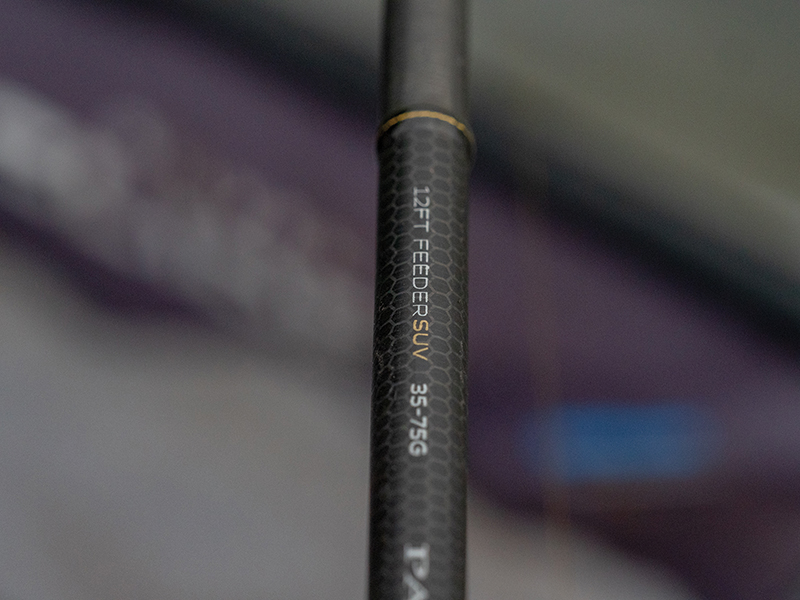 Bait
Bait
Under normal conditions, bait choice would be very easy at Barston – dominated by pellets and wafters! In international rules events though, it’s natural baits only so the biggest ‘carp’ baits that are allowed are corn and worms! With Method feeders banned also, stickymag becomes an incredible tactic in international events for bigger fish like carp and F1s.
A few years ago the Hungarian team came over here to fish a feeder event to the same rules we’ll be fishing to in the Euro Cup and took the place apart with stickymag through a cage feeder, so that is something that I think is going to play a big part, and as it isn’t something we do a lot of in England this is the method that will take the main focus in my practice time. 
 Preparing it is simple, just riddle all of the maize off the maggots and give them a spray with an atomiser, running your hand through the maggots until you don’t have any dust on your hand. Then simply add the stickymag to the maggots – go carefully with this as you can make them too sticky, the finished product is a ball of maggots that breaks down pretty quickly.
Preparing it is simple, just riddle all of the maize off the maggots and give them a spray with an atomiser, running your hand through the maggots until you don’t have any dust on your hand. Then simply add the stickymag to the maggots – go carefully with this as you can make them too sticky, the finished product is a ball of maggots that breaks down pretty quickly.
The last thing I want is a ball of maggots that isn’t going to exit my feeder quickly after it hits the bottom in the shallow water that we have on this lake. Experimenting with groundbaits is also important but on Barston it’s an out-and-out fishmeal venue so a mix of Sensas Power Green and Sweet Magic should give me the ideal blend of fishmeal and sweeter flavours that finds favour with the huge head of skimmers.
What Did I Learn?
After kicking off my peg with eight bait-up feeders of sticky maggots, hemp and groundbait at 35 metres and a further eight bait-ups of groundbait with some maggots and chopped worm at 14 metres, I was keen to see if any carp came straightaway to the bombardment on the longer line. I’ve sat at the far end today, away from the main carp areas so I wasn’t expecting to catch many, but as it was a practice, time is never wasted!
Chucking out a maggot-loaded cage with a free running rig and a bunch of maggots on the hook it wasn’t long before the tip jagged round! A short scrap saw a small carp in the net, an encouraging sign that the stickymag was going to be good in the carp areas. I didn’t catch another carp after that, and after trying to spark another bite by feeding more maggots the skimmers moved in and I was catching steadily.  What was interesting on the day is that all the skimmers I caught at 35 metres (and eventually at 60 metres where I moved to later to see if the carp were at longer range) were all of a much bigger stamp than anything I caught on the short line; this kind of understanding is invaluable when it comes to knowing where particular fish are likely to be found should I need to target better fish on the match days.
What was interesting on the day is that all the skimmers I caught at 35 metres (and eventually at 60 metres where I moved to later to see if the carp were at longer range) were all of a much bigger stamp than anything I caught on the short line; this kind of understanding is invaluable when it comes to knowing where particular fish are likely to be found should I need to target better fish on the match days.
The short line was another interesting one; fishing maggots and small bits of worm I’ve quite literally had a bite a cast on this, but the fish have been a little unsettled at times so next time I come to practise I’m going to fish my short line a couple of metres further out at 16 metres, where I hope that they’ll be more confident.  Another important lesson I’ve learnt today is that braid wasn’t right on the short line. I’ve bumped a few fish, despite having a short 2m leader and a 6in powergum link included in my setup. I feel it’s been a little harsh so I think mono would be better on this line in the match.
Another important lesson I’ve learnt today is that braid wasn’t right on the short line. I’ve bumped a few fish, despite having a short 2m leader and a 6in powergum link included in my setup. I feel it’s been a little harsh so I think mono would be better on this line in the match.
Similarly, on the long line I’d like to have two rods set up out there next time, one with braid when there are plenty of better skimmers present with a normal length shockleader, and another rod with mono in case the carp turn up. By having this sort of knowledge and the right setups on each line, I feel I’m going to be able to swap between the very best setups and change as the match progresses. Match fishing is all about being efficient and that’s what practice days like this one help to achieve.
The final thing I picked up on is that perhaps my groundbait mix had been slightly too strong and powerful on the day, and with the water temperature likely to drop by the time the match comes around, I’ll be trying another mix with a sweeter note to it on my next practice session.
This had been an excellent day when it comes to practising; it hadn’t all gone perfectly and there were improvements to be made, but if every practice goes perfectly, you probably aren’t learning much either so a few changes going into the next one are always good in my opinion. With over 50lb of skimmers plus that small carp in the net at the end of a four-hour session, it had been a great day with plenty of bites, which you come to expect on a brilliant venue like Barston.
Me and my Ireland team-mates have plenty of work to do in preparation and a full team practice will also help, as many heads are better than one in events like this and hopefully, by the time you’ve read this we’ll have a medal of some description around our necks.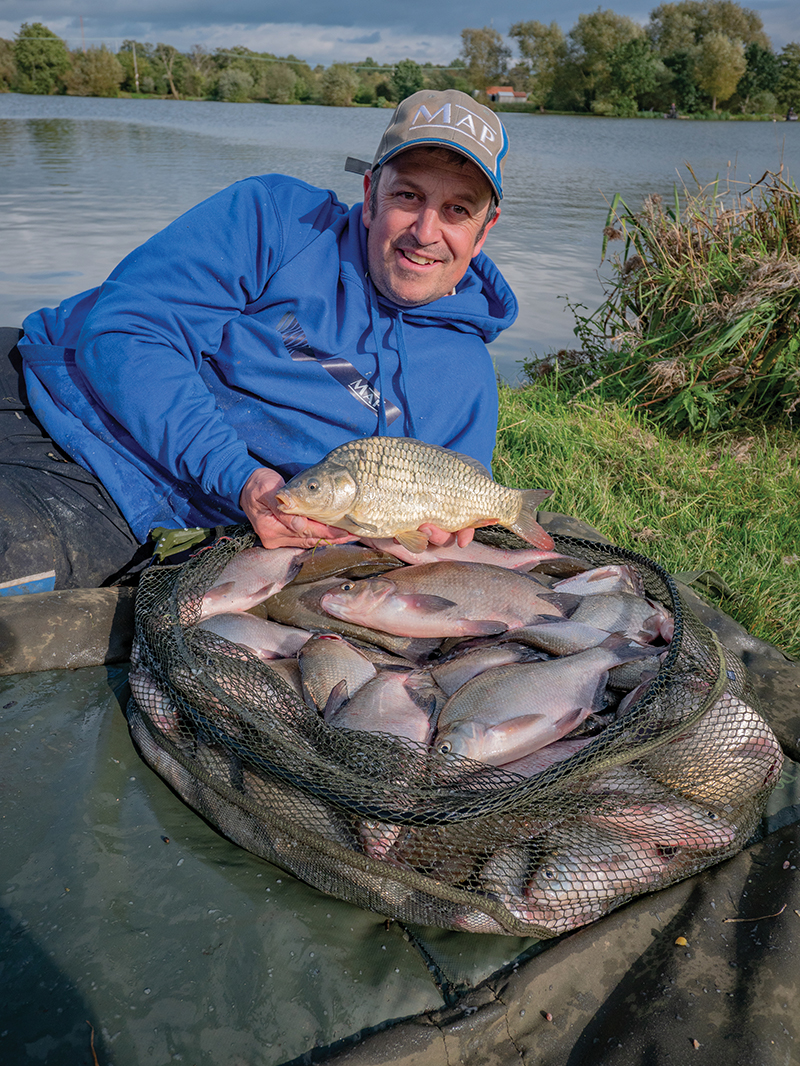
- Log in or register to post comments

